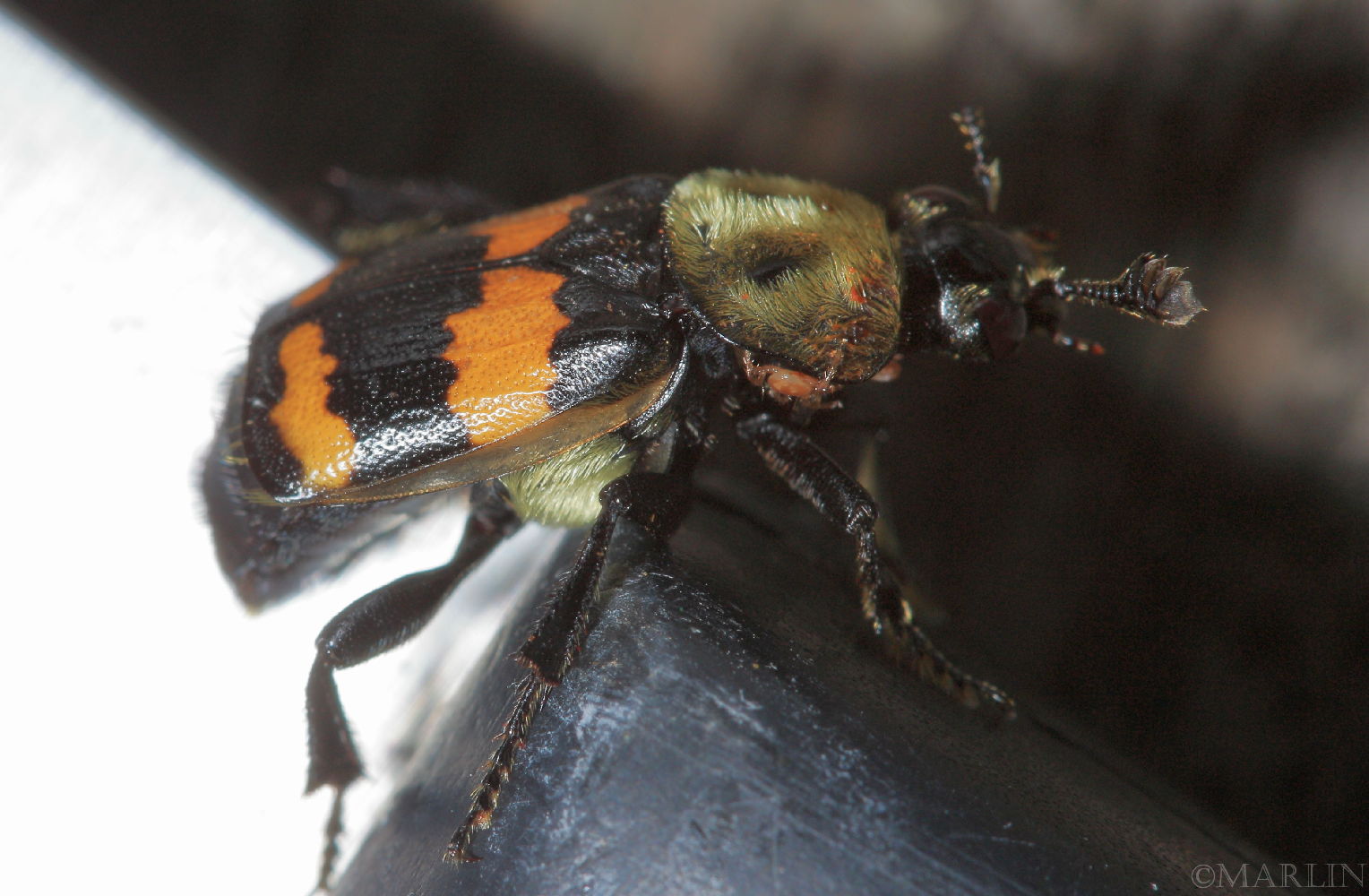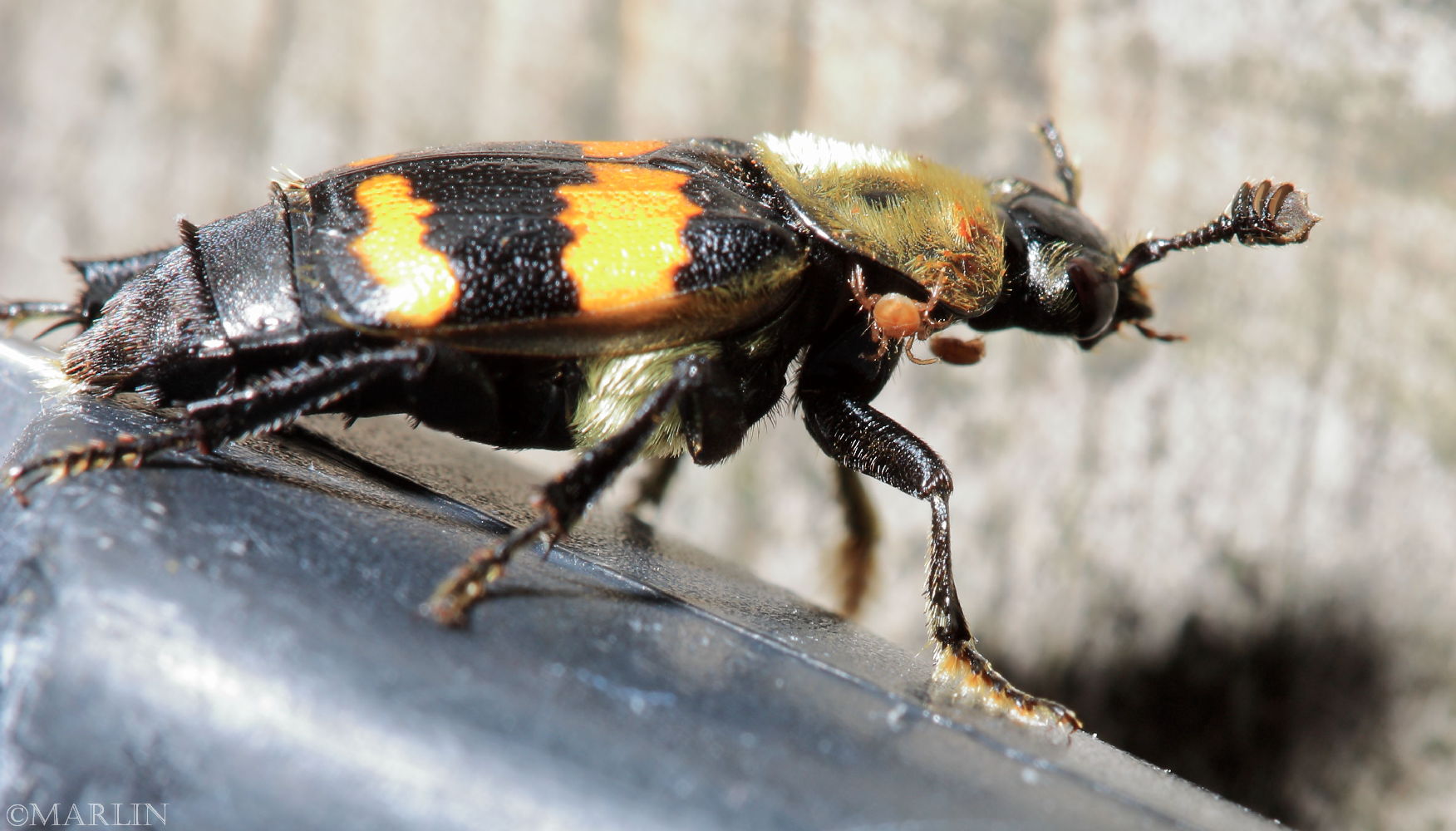Burying Beetle – Nicrophorus tomentosus
This sexton beetle has gamasid mites hitchhiking on it.
These beetles are frequently infested by reddish-brown gamasid mites (Gamasus species), which cluster between the body segments, under the wing-cases and anywhere else that the beetle cannot easily reach with its legs to dislodge them.
Sexton Beetles are found on carrion and often bury small dead animals (rodents, birds, etc.) as a food store for themselves and their offspring. The beetles can fly long distances to locate carrion, presumably attracted by smell.
When the beetles find a small carcass, they creep underneath and excavate the soil below, pushing it to the sides and using their jaws to cut away obstacles, such as grass roots. In this way the dead mouse or bird slowly sinks into the earth until it is completely buried.
The female beetle lays her eggs in the soil, close to the buried carcass, and remains there until the eggs hatch. There appears to be some degree of parental care, in that the female beetle regurgitates a brown liquid of partly digested food for the young larvae, until they are large enough to eat the carrion on their own.
The fully grown larvae burrow into the soil to pupate, away from the remains of the carcass (if any), and eventually emerge as new adult beetles to start the cycle over again. Thus, sexton beetles are beneficial as scavengers by helping to clear away corpses.
Family Silphidae: Sexton beetles, also commonly called burying beetles.
Live sexton beetles photographed in the wild at Allegheny National Forest, Pennsylvania, USA.
Reference: Bugguide.net Tomentose Burying Beetle

